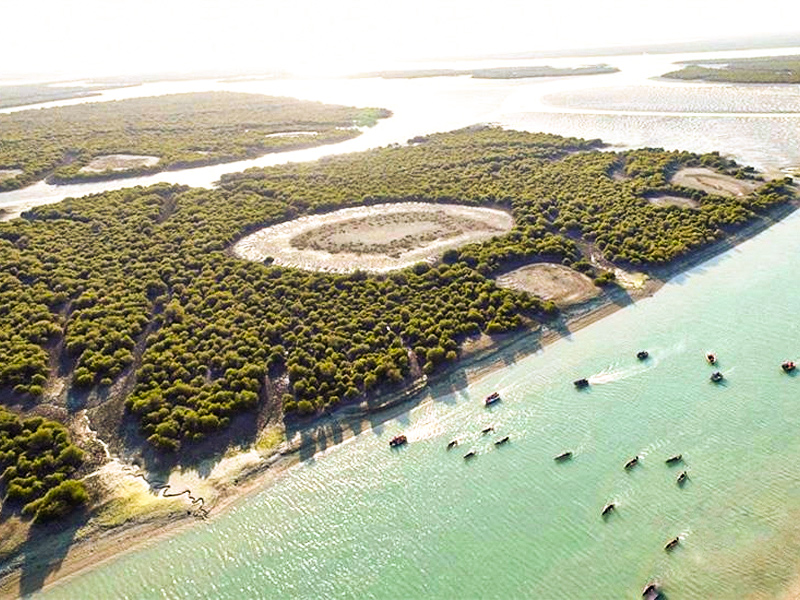The Hara forests, commonly known as “Mangrove” and scientifically named “Avicennia marina,” are a type of coastal mangrove forest that grows in tropical and subtropical regions. These forests form in the coastal and swampy areas of the islands in the Persian Gulf and the Sea of Oman, where specific plant and animal species thrive and reproduce. In Iran, these forests are known as “Hara Forests” in honor of the Iranian scientist, Hakim Ibn Sina. The Hara forests of Iran are highly attractive areas that attract many eager tourists. But in which parts of Iran do the Hara forests exist, and what are the characteristics of these forests? Stay with Eligasht to provide you with complete information about the Hara forests of Iran.
Book Iran Air flights from London to Tehran and Tehran to London with Eligasht UK:
In which regions of Iran do the Hara forests exist?
First, let’s see in which regions of Iran the Hara forests exist. These beautiful forests are found along the coasts of the Persian Gulf and the Sea of Oman, in three provinces of Iran: Sistan and Baluchestan, Hormozgan, and Bushehr. According to legends, Hara is a plant that grows from the tears of humans. This plant is known as “Tamar” in Sistan and Baluchestan, “Hara” in Bandar Abbas, “Gorm” in Bushehr, and “Tool” in some other areas.
Introduction to Iran’s Hara Forests
In the complete introduction to Iran’s Hara forests, we become more familiar with these remarkable forests. Iran’s Hara forests stretch from the Gulf of Gwatr in Sistan and Baluchestan to Bardkhun in Bushehr. Four areas of these forests are managed by the Environmental Protection Organization: “International Wetland,” one area as “Coastal Marine National Park,” one area as “Biosphere Reserve,” and eight areas as “Protected Areas.”
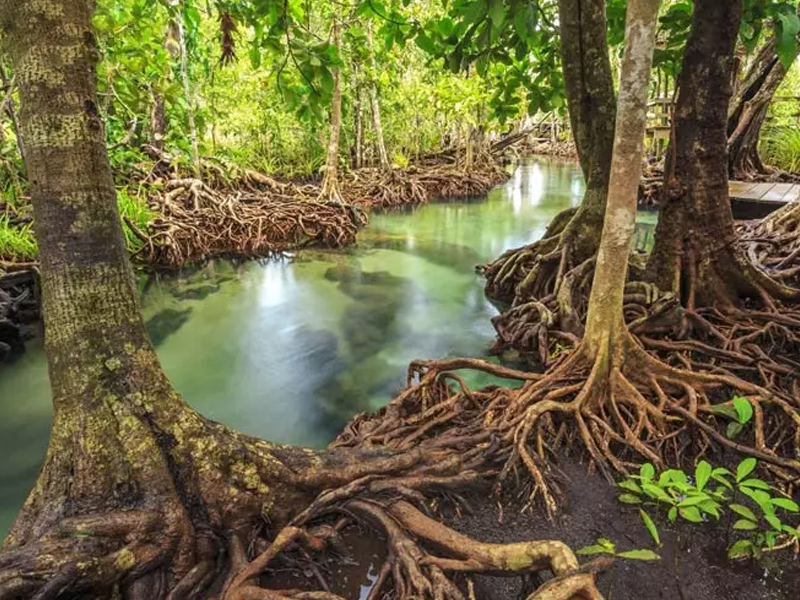
The Hara forests along the northern and western shores of Qeshm Island and the Nayband Forest in Bushehr province are among the most significant parts of these forests. The Hara Nayband Forest, with an area of 390 hectares, is considered the most extensive distribution area of these trees. Additionally, Hara Forest in Asaluye, Bushehr, is one of the sensitive coastal areas known as a Biosphere Reserve (internationally recognized protected natural and biological areas). This section accommodates various types of salt-loving marine plants, benthic organisms, and oceanic migratory birds within its diverse ecosystem.
The range of Hara forests in different provinces of Iran is specified in the table below.
Sistan and Baluchestan:
- Hara Forest of Gulf of Gwadar Chabahar, Khorkhoran Wetland between Bandar Khamir, Bandar Laft, and the southwest of Bandar Abbas, as well as the northwest of Qeshm Island.
- Tiyab and Kolahi area in Mashdar, Behineh, Korgan, and Minab.
- Jask County in Gabrik, Jegin, Shahr-e Now River on the shores of Lash Village, Yekdar, and Sur-e Golm, as well as the riverbeds of Kashi River.
Hormozgan:
- Sirik area in Nakhl Ziarat, Pachur, Garendehu, Ganari, and Kartan
- Kolghan area in Jalabi and Hasan Lengi and the mouth of the Shour River
- Khamir section (from Pahl coasts, Mardou Island to the west of Lashteqan) and at the entrance of Mehran River to the Persian Gulf
- Saye Khosh area, affiliated with Bandar Lengeh and along the foothills of Bandar Khamir in the western lands of Mehran Delta.
Bushehr:
- Nayband Gulf, located in Nayband National Park in Asaluye County
- Hara-e Malgonzeh, located in the Marine National Park of Nakhlou
- Deir County (the northernmost natural habitat of Hara in the world)
- Hara-e Deir, located in the Gulf near Bandar Deir and in the vicinity of Bardestan in Deir County (cultivated)
- Coastal counties of the province (cultivated)
Khuzestan
- Coasts of the province and Bandar Mahshahr (cultivated)
Approximate Extent of Forests in Iran
If we want to express the approximate extent of forests in Iran by province, we first need to turn to the Gulf of Gwatr in Sistan and Baluchestan. The forest of Harra in this region covers an area of 33 hectares and is located 150 kilometers from Chabahar.

The Harra Forest in Hormozgan, which has been under environmental protection since 2001 and is known as a “biosphere reserve,” includes the coasts of Qeshm Island, Hormuz Island, Bandar-e Pol, Bandar-e Lengeh, Bandar-e Khamir, Tiab, and Jask. The extent of these forests is as follows:
– Khorkhoran International Wetland and Forest: 86,581 hectares
– Azini Wetland: 15,000 hectares
– Tiab and Minab Forests: 78,099 hectares
– Gabrik and Jask Forests: 34,596 hectares
– Rud-e Gaz Forest: 27,046 hectares
– Khoran Forest: 2,518 hectares
It is interesting to note that the Harra Forest in Hormozgan holds the first position in terms of quantity in the country. Additionally, the approximate extent of the Hara Forest in Bushehr province is over 636 hectares, ranking third in the country in terms of quantity. The area of mangrove forests in Khuzestan province, Bandar Mahshahr, has also reached 650 hectares due to numerous plantations in recent years.
Related post
The Most Famous Waterfalls in Iran
10 of the most important fire temples in Iran
The Beauty of the Hara Forests
Lush Green Canopies
The Hara forests astonish visitors with their vibrant green canopies that stretch as far as the eye can see. The dense mangrove trees create a mesmerizing sight, as their slender trunks and intertwining branches create a labyrinthine landscape. The foliage provides a cool and refreshing atmosphere, making it an ideal escape from the scorching heat of the Persian Gulf region.
Unique Ecosystem
The Hara forests boast a unique ecosystem that thrives within the brackish waters of the Persian Gulf. These mangrove forests are home to a diverse range of plant and animal species, making them a vital ecological hotspot. The tangled roots of the mangrove trees provide a habitat for various marine creatures, including fish, crabs, and birds.
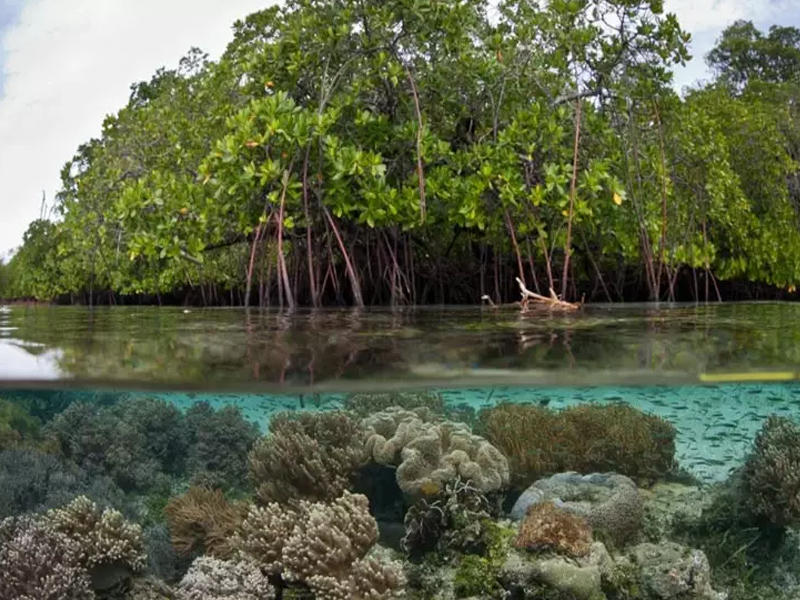
Tranquil Waterways
One of the most enchanting aspects of the Hara forests is the network of waterways that meander through the dense foliage. Visitors can embark on peaceful boat rides or kayak adventures, gliding through the narrow channels and witnessing the untouched beauty of this natural oasis. The tranquility of these waterways makes it an idyllic escape for nature lovers and photographers alike.
Benefits of Hara (Mangrove) Forests
Hara (mangrove) forests have numerous benefits for humans and animals. The trunks, roots, and stem tissues of Hara trees purify the salty seawater. These evergreen forests with their attractive appearance attract many tourists to the southern provinces of Iran. Furthermore, Hara or mangrove forests are the habitats of many small and large creatures. These forests also prevent the occurrence of dust storms in provinces like Khuzestan. In recent years, planting Hrra trees in Mahshahr has been effective, and these trees can be used in other coastal areas of Khuzestan to prevent dust storms.
It is interesting to know that in the past, the indigenous people of Qeshm Island believed that the water and flowers of this forest would cause weight loss. Another benefit of Hara forests is a fascinating product called “Hara honey,” which is obtained from these forests. This honey has many benefits for humans and is sold at high prices in countries like the United Arab Emirates. Hara forest honey can be purchased on Qeshm Island.
other benefits of these forests are:
Protection Against Coastal Erosion
The mangrove trees of the Hara forests play a crucial role in protecting the coastal regions against erosion caused by strong waves and tides. The intricate root systems of these trees act as natural barriers, stabilizing the soil and preventing the erosion of coastlines. They serve as a shield against storms and provide a natural defense mechanism for the surrounding communities. Harra forests act as natural barriers, preventing marine storms and waves from damaging coastal facilities.
Nurseries for Marine Life
The Hara forests act as nurseries for a plethora of marine species, providing a safe haven for their breeding and early life stages. The dense root systems of the mangrove trees offer shelter and protection for juvenile fish, crustaceans, and various other marine organisms. This nurturing environment helps maintain the delicate balance of marine ecosystems and supports the sustainability of fish populations.
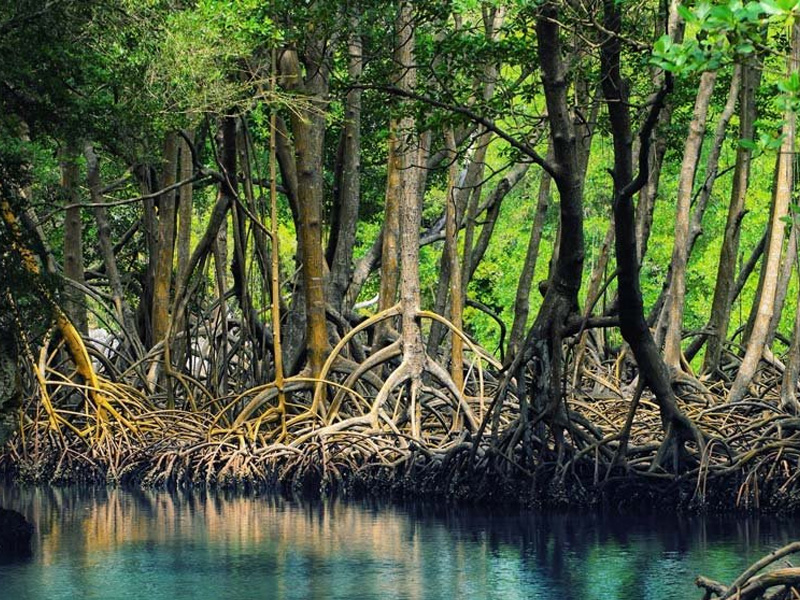
Carbon Capture and Climate Regulation
Mangrove forests are known for their exceptional ability to capture and store carbon dioxide, making them vital contributors to climate regulation. The Hara forests of Iran play a significant role in absorbing carbon dioxide from the atmosphere, mitigating the effects of climate change. They contribute to the overall health of the planet by helping to reduce greenhouse gas emissions.
Uses of Hara Trees
The uses of Harra trees can be observed in various aspects of human life. Hara trees are highly suitable for making fire. The bark and sap of these trees can heal skin diseases and scabies. Additionally, these trees contain a chemical substance called “Mazo ink,” which is used in the leather industry. Adhesive for plywood, wood pulp, and dry fodder (as animal feed) are other products that can be obtained from Hara trees.
In the past, due to the lack of specialized tools for hollowing out wood, the trunk of Hara trees was used to make drums. It is even said that the first drum on Qeshm Island was made from the wood of these trees.
Important Tips for Visiting Hara Forests
Important tips for visiting Hara forests include:
- Make every effort to protect this biosphere reserve during your visit to Harra forests.
- Do not disturb the peace and tranquility of the Hara forest, as it is the habitat for various animals.
- Pay attention to the guide’s recommendations when visiting these forests.
- Avoid touching bird nests and the habitats of mice.
- Do not hunt within the vicinity of Hrra forests.
- Refrain from touching branches and leaves of trees, and take all your waste with you when leaving the area.
- If you are interested in seeing the yellow flowers of Harra trees, visit these forests in May/June.
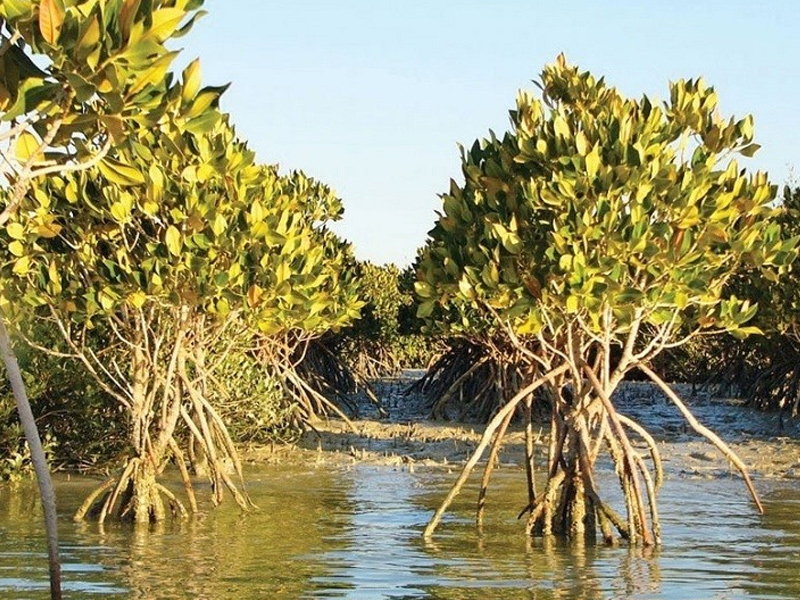
Final words
In this article from Eligasht, we introduced the Hara forests of Iran. As mentioned, these valuable forests are scattered in the southern provinces of Iran, namely Sistan and Baluchestan, Hormozgan, Bushehr, and Khuzestan. The importance of these forests is such that July 26, which corresponds to the 4th of Mordad on the Iranian calendar, is designated as the World Mangrove Day for the protection of the mangrove ecosystem. Most parts of Iran’s Hara forests are protected areas and biosphere reserves managed by the Environmental Protection Organization. If you are interested in visiting these forests, be sure to include a visit to these areas in your trip to the south of the country.
FAQ
1.What is the significance of Hara forests in Iran?
Hara forests in Iran are of great ecological importance. They serve as biosphere reserves and provide habitats for diverse animal species. These forests also act as natural barriers, protecting coastal areas from marine storms and waves. Additionally, they contribute to purifying sea water and preventing the occurrence of dust storms in nearby provinces.
2.Where are the Hara forests located in Iran?
Hara forests are primarily located in the southern provinces of Iran, including Sistan and Baluchestan, Hormozgan, Bushehr, and Khuzestan. These forests can be found along the coasts of Qeshm Island, Hormuz Island, Bandar-e Pol, Bandar-e Lengeh, Bandar-e Khamir, Tiab, Jask, and other coastal areas.
3.What activities can visitors engage in while visiting Hara forests?
Visitors to Hara forests can engage in several activities. They can enjoy nature walks, birdwatching, and exploring the unique flora and fauna of the forests. Boat tours and kayaking are also popular activities in some areas. Additionally, visitors can learn about the cultural and historical significance of these forests by interacting with local communities and visiting nearby attractions.
